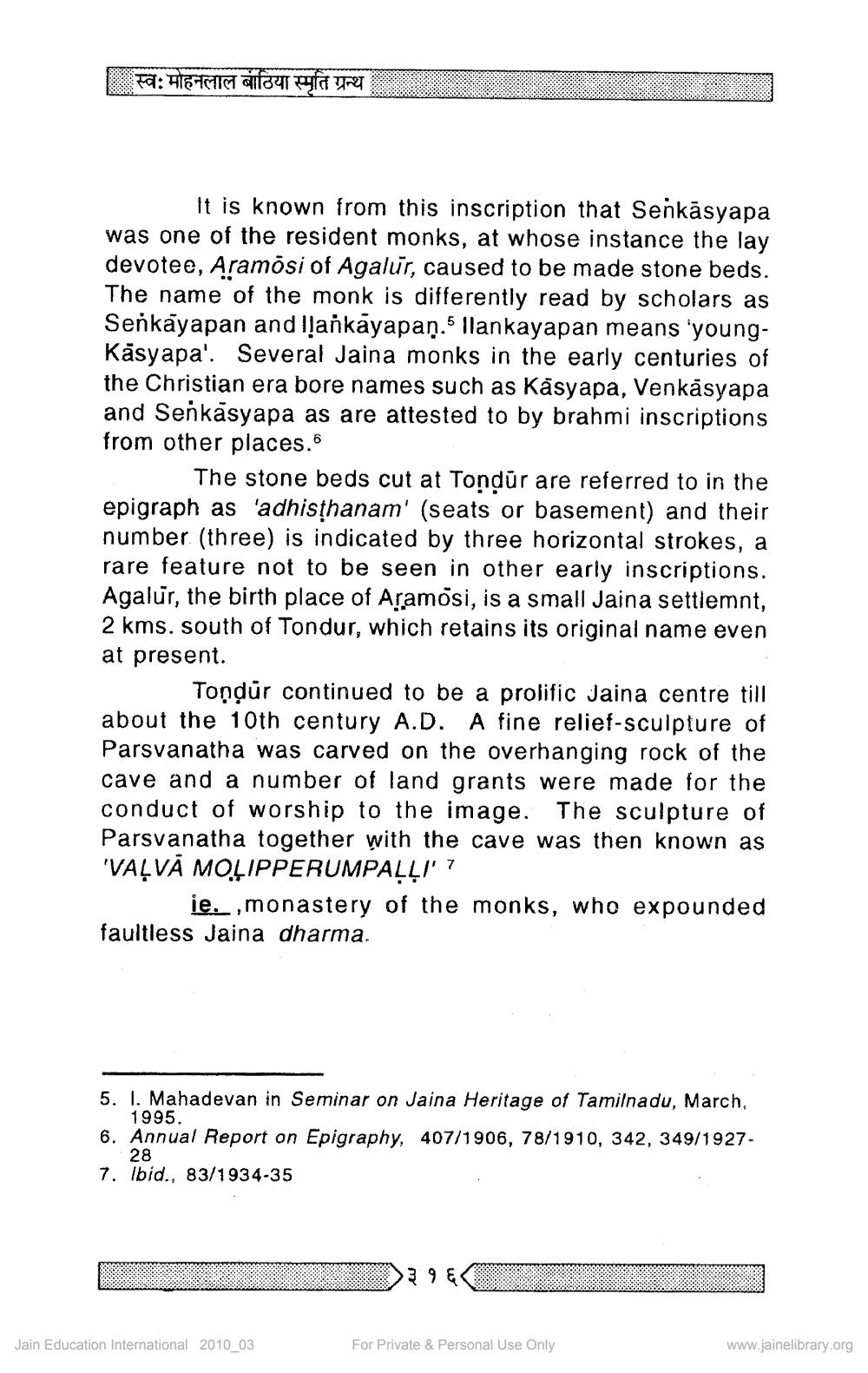Book Title: Recent Jain Discoveries in Tamilnadu Author(s): A Ekambarnathan Publisher: Z_Mohanlal_Banthiya_Smruti_Granth_012059.pdf View full book textPage 3
________________ । स्व:मोहनलाल बाठिया स्मृति ग्रन्थ It is known from this inscription that Senkāsyapa was one of the resident monks, at whose instance the lay devotee, Aramosi of Agalur, caused to be made stone beds. The name of the monk is differently read by scholars as Senkāyapan and lankāyapan.5 llankayapan means youngKäsyapa'. Several Jaina monks in the early centuries of the Christian era bore names such as Käsyapa, Venkāsyapa and Senkāsyapa as are attested to by brahmi inscriptions from other places.. The stone beds cut at Tondūr are referred to in the epigraph as 'adhisthanam' (seats or basement) and their number (three) is indicated by three horizontal strokes, a rare feature not to be seen in other early inscriptions. Agalur, the birth place of Aramosi, is a small Jaina settlemnt, 2 kms. south of Tondur, which retains its original name even at present. Tondūr continued to be a prolific Jaina centre till about the 10th century A.D. A fine relief-sculpture of Parsvanatha was carved on the overhanging rock of the cave and a number of land grants were made for the conduct of worship to the image. The sculpture of Parsvanatha together with the cave was then known as 'VALVA MOLIPPERUMPALLI' ? ie. , monastery of the monks, who expounded faultless Jaina dharma. 5. I. Mahadevan in Seminar on Jaina Heritage of Tamilnadu, March, 1995. 6. Annual Report on Epigraphy, 407/1906, 78/1910, 342, 349/1927 28 7. Ibid., 83/1934-35 396 Jain Education International 2010_03 For Private & Personal Use Only www.jainelibrary.orgPage Navigation
1 2 3 4 5 6 7 8 9 10 11
